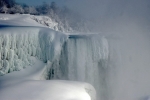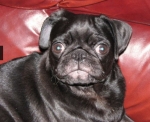APAP Related Questions and Advice
Re: APAP Related Questions and Advice
WoW, RobySue, your explanations are great. I always learn something from your posts.
_________________
| Mask: Swift™ FX For Her Nasal Pillow CPAP Mask with Headgear |
| Humidifier: S9™ Series H5i™ Heated Humidifier with Climate Control |
| Additional Comments: Began therapy March 22. Also use Sleepweaver advanced, Sleepyhead software. |
- BasementDwellingGeek
- Posts: 262
- Joined: Sat Nov 05, 2011 12:54 pm
- Location: N Billerica, MA, USA
- Contact:
Re: APAP Related Questions and Advice
Thanks for the clarification.Yes, they're related, but the terms flow limitation (FL),respiratory effort realed arousal (RERA), and upper airway resistance syndrome (UARS) are not synonymous.
I did wonder about the scale on the flow limitations and at what point does it become a concern. There is so much too learn!
_________________
| Mask: Swift™ FX Nasal Pillow CPAP Mask with Headgear |
| Humidifier: S9™ Series H5i™ Heated Humidifier with Climate Control |
| Additional Comments: own home grown SW to make it all work together, SH too. |
bdg
(PR System One REMstar Pro CPAP Machine with C-Flex Plus and related humidifier as backup)
There are two types of people in this world. Those that can extrapolate from incomplete data
(PR System One REMstar Pro CPAP Machine with C-Flex Plus and related humidifier as backup)
There are two types of people in this world. Those that can extrapolate from incomplete data
Re: APAP Related Questions and Advice
Geek, because I use a Resmed S9 APAP I don't need to worry about Snoring and Flow Limitation, if my machine is set to my CPAP optimal pressure of 13 cm, whic gets get rid of all or most of my Obstructive Apneas. Since it's above 10 cm then most of the Flow Limitatiom should have been treated.
Check this about the S9 Autoset by Resmed's chief designer:
From an interview with Dr Michael Berthon-Jones, in 2002.
Q. Why is it important for an automatic CPAPdevice
to respond to flow limitation, snore and apnea?
A.The characteristic flattening of the flow-time
curve caused by flow limitation is the very best
signal for fine-tuning the pressure, once you have
eliminated apneas and snoring. But if you are just
falling asleep, you can go very quickly from having
a totally open airway to snoring very loudly, in a way
that produces somewhat chaotic or messy flowtime
curves, without seeing the characteristic
flattening. So the best approach is to respond very
quickly to loud snoring, and then fine tune using
flattening. Rarely, you can go straight from awake
and unobstructed to asleep and apneic, and so it
can be useful to increase pressure in response to
apnea as well. However, actual apnea is pretty rare
on AutoSet, because in most cases the responses
to snoring and flattening get the pressure up
quickly enough to prevent apneas.
The S9 Autoset checks the level of Flow Limitation by analyzing the flatness of the respiration waves. See about it here after clicking the "Download PDF":
http://www.google.com/patents/US7730886
So, following Dr Michael of Resmed's explanation I should be fine if I see my graphs results as:



Checking the above cluster of events:

So I had only one Obstructive Apnea left, untreated (in red), from the whole night. Not bed!
But, I still have some flatness in the shape of my respiration waves left, as you see here:

But since my Flow Limitation is not profound, and I don't think that I suffer specifically from UARs only, I don't think that I need to explore a BiLevel machine as suggested by the sleep specialist, Dr Barry Krakow [Kraiko], here:
our-collective-cpap-wisdom/flow-limitat ... BiPAP.html
Check this about the S9 Autoset by Resmed's chief designer:
From an interview with Dr Michael Berthon-Jones, in 2002.
Q. Why is it important for an automatic CPAPdevice
to respond to flow limitation, snore and apnea?
A.The characteristic flattening of the flow-time
curve caused by flow limitation is the very best
signal for fine-tuning the pressure, once you have
eliminated apneas and snoring. But if you are just
falling asleep, you can go very quickly from having
a totally open airway to snoring very loudly, in a way
that produces somewhat chaotic or messy flowtime
curves, without seeing the characteristic
flattening. So the best approach is to respond very
quickly to loud snoring, and then fine tune using
flattening. Rarely, you can go straight from awake
and unobstructed to asleep and apneic, and so it
can be useful to increase pressure in response to
apnea as well. However, actual apnea is pretty rare
on AutoSet, because in most cases the responses
to snoring and flattening get the pressure up
quickly enough to prevent apneas.
The S9 Autoset checks the level of Flow Limitation by analyzing the flatness of the respiration waves. See about it here after clicking the "Download PDF":
http://www.google.com/patents/US7730886
So, following Dr Michael of Resmed's explanation I should be fine if I see my graphs results as:



Checking the above cluster of events:

So I had only one Obstructive Apnea left, untreated (in red), from the whole night. Not bed!
But, I still have some flatness in the shape of my respiration waves left, as you see here:

But since my Flow Limitation is not profound, and I don't think that I suffer specifically from UARs only, I don't think that I need to explore a BiLevel machine as suggested by the sleep specialist, Dr Barry Krakow [Kraiko], here:
our-collective-cpap-wisdom/flow-limitat ... BiPAP.html
_________________
| Humidifier: S9™ Series H5i™ Heated Humidifier with Climate Control |
| Additional Comments: S9 Autoset machine; Ruby chinstrap under the mask straps; ResScan 5.6 |
Last edited by avi123 on Sun Jul 15, 2012 10:08 am, edited 2 times in total.
see my recent set-up and Statistics:
http://i.imgur.com/TewT8G9.png
see my recent ResScan treatment results:
http://i.imgur.com/3oia0EY.png
http://i.imgur.com/QEjvlVY.png
http://i.imgur.com/TewT8G9.png
see my recent ResScan treatment results:
http://i.imgur.com/3oia0EY.png
http://i.imgur.com/QEjvlVY.png
Re: APAP Related Questions and Advice
Pugsy, I'm pretty sure Mike does not have precursors such as snores, FL,etc, his apneas seem to be "frank, out-of-the-blue ones". In that case, would he be better off with straight cpap pressure at his 95% pressure. I'm thinking that if his pressure happens to be sitting at it's lowest on apap(10.6-13.6) when he's having a frank apnea, the event has a better chance of becoming a full blown apnea because he's not at his optimal pressure which is usually 12.5 (95%). Any thoughts?Pugsy wrote:Hey, I almost missed this. You are right that APAP machines need a bit of time to respond to event precursors BUT as long as the minimum pressure gives the machine a good enough head start then it has the time. They respond to event precursors and not frank out of the blue apneas. If an event sneaks past the defenses the machine sits by and twiddles its thumbs till the event passes. None of them will respond and act like a ventilator (unless ASV machine) so it doesn't matter about the response time. They could also happen when using straight cpap pressure.Sheriff Buford wrote:Pugsy... look the other way for a minute) it takes time for an apap to ramp up and treat an apnea.
The whole idea with APAP is adjusting pressure due to event precursors (snores, flow limitations, etc) and preventing a full blown event and not so much blowing through the event once it does grow up to become a full fledged apnea event.
_________________
| Mask: Mirage Quattro™ Full Face CPAP Mask with Headgear |
| Additional Comments: 14/8.4,PS=4, UMFF, 02@2L, |
"Do or Do Not-There Is No Try"-"Yoda"
"We are what we repeatedly do,so excellence
is not an act but a habit"-"Aristotle"
DEAR HUBBY BEGAN CPAP 9/2/08
"We are what we repeatedly do,so excellence
is not an act but a habit"-"Aristotle"
DEAR HUBBY BEGAN CPAP 9/2/08
Re: APAP Related Questions and Advice
Dori,DoriC wrote:Pugsy, I'm pretty sure Mike does not have precursors such as snores, FL,etc, his apneas seem to be "frank, out-of-the-blue ones". In that case, would he be better off with straight cpap pressure at his 95% pressure. I'm thinking that if his pressure happens to be sitting at it's lowest on apap(10.6-13.6) when he's having a frank apnea, the event has a better chance of becoming a full blown apnea because he's not at his optimal pressure which is usually 12.5 (95%). Any thoughts?Pugsy wrote:Hey, I almost missed this. You are right that APAP machines need a bit of time to respond to event precursors BUT as long as the minimum pressure gives the machine a good enough head start then it has the time. They respond to event precursors and not frank out of the blue apneas. If an event sneaks past the defenses the machine sits by and twiddles its thumbs till the event passes. None of them will respond and act like a ventilator (unless ASV machine) so it doesn't matter about the response time. They could also happen when using straight cpap pressure.Sheriff Buford wrote:Pugsy... look the other way for a minute) it takes time for an apap to ramp up and treat an apnea.
The whole idea with APAP is adjusting pressure due to event precursors (snores, flow limitations, etc) and preventing a full blown event and not so much blowing through the event once it does grow up to become a full fledged apnea event.
In my humble opinion, the answer is: It depends.
Does Mike seem to sleep more soundly on APAP or CPAP? That's an important question.
And on APAP, how often does Mike have two or three events in a very sort period of time----as in within a couple of minutes of each other? The only time the S9 is going to increase pressure in direct response to OAs and Hs is if two (or more) of them occur within about 2 minutes of each other. If there's more than 2 or 3 minutes between the events and there is NO snoring and NO flow limitations, the S9 is not going to increase the pressure.
So you might want to carefully look at all of Mike's detailed data. Compare the pressure graph with his flow limitation graph. Compare his pressure graph with the snore graph. And compare the pressure graph to the event flags as well. That's the only way you can really figure out what kinds of things actually trigger pressure increases. Back when I was still using an S9 Autoet, the machine would respond to very small levels of snoring and flow limitations.
So the upshot of what I'm saying is this: If Mike is just as comfortable sleeping with straight CPAP at his 95% pressure setting, then his AHI might indeed be a bit lower on straight CPAP and he might feel better. But if Mike is less comfortable sleeping with CPAP set to his 95% pressure setting, his nighttime restlessness is likely to increase and with that, he'll likely feel worse during the daytime even if his AHI is lower.
_________________
| Machine: DreamStation BiPAP® Auto Machine |
| Mask: Swift™ FX Nasal Pillow CPAP Mask with Headgear |
| Additional Comments: PR System DreamStation and Humidifier. Max IPAP = 9, Min EPAP=4, Rise time setting = 3, minPS = 3, maxPS=5 |
Re: APAP Related Questions and Advice
Like Robysue says..it depends.DoriC wrote:Pugsy, I'm pretty sure Mike does not have precursors such as snores, FL,etc, his apneas seem to be "frank, out-of-the-blue ones". In that case, would he be better off with straight cpap pressure at his 95% pressure. I'm thinking that if his pressure happens to be sitting at it's lowest on apap(10.6-13.6) when he's having a frank apnea, the event has a better chance of becoming a full blown apnea because he's not at his optimal pressure which is usually 12.5 (95%). Any thoughts?
If Mike is having "frank" obstructive apneas then you go back to what Den has said all this time...straight cpap at a pressure that takes care of "most" of the events. It would take a lot of putting the flow graphs under the microscope to maybe spot the event precursors (if there are any). That's a big "maybe spot" them also.
_________________
| Machine: AirCurve™ 10 VAuto BiLevel Machine with HumidAir™ Heated Humidifier |
| Additional Comments: Mask Bleep Eclipse https://bleepsleep.com/the-eclipse/ |
I may have to RISE but I refuse to SHINE.
Re: APAP Related Questions and Advice
Thanks Robysue and Pugsy, as you know, this has been my ongoing hangup all these years which I'm sure drove Den(wulfman) crazy!! And Rested Gal and a few others too! I've just got it in my head that Apap should be better than Cpap for Mike although I have no proof that the narrow range I use is any better than straight, and I have tried asking Mike in every way possible which feels better to no avail. Just when I'm convinced that one mode is better than the other, he has a few bad nights and I think by switching I'll make things "better". I know microscoping the graphs too much will give me anxiety so I'll just have to go by what data I know how to read and what Den determined early on that Mike has no precursors, just mostly frank apneas, which I'm pretty sure is true, and by how he feels during the day. He can tell me if he's had a bad night or a good night and the data usually bears that out with the leak graph and the CAs. I'll be rereading your posts a few times before it sinks in! Thanks.
_________________
| Mask: Mirage Quattro™ Full Face CPAP Mask with Headgear |
| Additional Comments: 14/8.4,PS=4, UMFF, 02@2L, |
"Do or Do Not-There Is No Try"-"Yoda"
"We are what we repeatedly do,so excellence
is not an act but a habit"-"Aristotle"
DEAR HUBBY BEGAN CPAP 9/2/08
"We are what we repeatedly do,so excellence
is not an act but a habit"-"Aristotle"
DEAR HUBBY BEGAN CPAP 9/2/08













